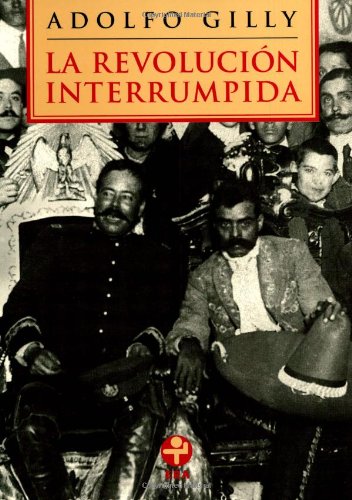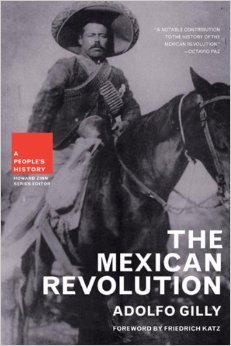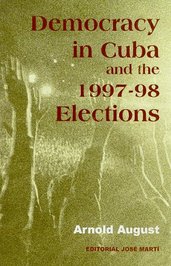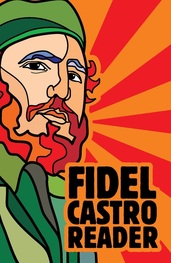However, the Cuban system is fundamentally different from capitalism. The decision-making process is in the hands of delegates of the people, rather than politicians with obligations to capitalists. And as a consequence, the surplus is used for the well-being of the people and the nation, and not in accordance with the particular interests of a small minority of capitalists. But in classic Marxist terms, the system continues to exploit the worker, paying the worker less than the value of what he or she produces; and it tends to be accompanied by exhortations to work hard for the good of the nation and the people.
In order to eliminate exploitation, both private and state ownership would have to be abolished, replacing it with collective ownership by the workers themselves. Although collective ownership in a cooperative organization has been a central to socialist projects, it is not always practical. The situation of agriculture in Cuba at the time of the triumph of the revolution in 1959 illustrates this. The revolutionary government distributed land to tenant farmers, sharecroppers, and land occupiers, and it provided support for them and independent farmers in the formation of (non-compulsory) cooperatives. The agricultural cooperatives that were formed in the early 1960s, with the active support of the state, is one of the most successful sectors of the Cuban economy today. However, the situation was entirely different with respect to the large foreign-owned sugar plantations and refining mills. The workers lived in repressive and dehumanizing conditions, and had little education or training. In addition, many managers and technicians, both foreign and national, abandoned the country. Under these conditions, the revolutionary leadership believed that the most practical strategy was state ownership of the plantations, with the state appointing the managers and technicians with the necessary skills. It was not until the early 1990s, confronting the challenges associated with the collapse of the Soviet Union, that these state-owned farmed were converted into cooperatives, with a strong contractual relation with the state.
Similar obstacles were faced with respect to industry. As an underdeveloped country with a peripheral role in the capitalist world-economy, Cuban industrial and scientific development was limited, and many of the few with technical skills abandoned the country, in spite of revolutionary exhortations that they stay and participate in the development of the society. In this situation, the revolutionary government turned to state ownership and management of industrial and scientific enterprises, as the best option for the promotion of industrial and scientific development, which was one of the most fundamental revolutionary goals.
Although left by its own national history with no option but nationalization and state ownership of its principal industries, the Cuban Revolution did not consider that this should be a top-down process. The workers in industry, science, and agriculture were organized. An extensive process of unionization occurred, with 99% of workers incorporated. Moreover, it was and is a highly democratic process, with the workers electing their own leaders at the local level, who in turn elect delegates for provincial and national representation and political participation. At every place of work, in industry, agriculture, and science, the elected delegates of the workers co-manage the enterprises with the state-appointed managers, so that a constant dialogue from above and from below emerges as the norm.
As this system evolved from 1959 to 1990, popular participation in the revolution, and commitment to the revolutionary process, was exceptionally high, which was explained by Fidel as a phenomenon that emerges in those rare instances in which the people has the possibility to shape for itself its own destiny. Important gains were registered in health, education, science, culture, and sport, and an alternative political system of popular democracy was institutionalized. The popular commitment to the Revolution was so great that, with the collapse of the economy in the wake of the disappearance of the Soviet Union and the East European socialist bloc, the people could be asked to sacrifice in defense of the revolution. The people endured shortages of human needs, and they continued to participate in the structures of popular democracy.
However, the enormous sacrifice gradually took its toll on the spirit of the people. By the beginning of the twenty-first century, although the economy had slowly but surely recovered, there had emerged among the people a pervasive sense of dissatisfaction with the low material conditions of life. Recognizing that there was no miraculous solution to the problem, the revolutionary leadership nonetheless committed itself to search for ways and means, within the context of the objective limitations of the nation, to improve its productive capacity.
This process of improvement in the productive capacities of the nation began more or less around 2010, and it has gone through different stages, always accompanied by extensive popular consultations. Key moments have been the formulation and implementation of new “Guidelines;” and the formulation of a new constitution, which is presently being debated in local assemblies of the people, in places of work and neighborhoods.
The changes that are being developed and proposed represent, in some respects, movement toward a socialist ideal, but in other respects, they appear to be a turn to capitalism. This may seem paradoxical, but the key to its logic is the intention improve production, in order to better satisfy the material needs and desires of the people. The goal is to keep the people on board as active subjects in the revolutionary process, and to reverse the slight erosion of socialist values that has occurred during the course of the last quarter century. The changes include, in a socialist direction, a significant expansion in cooperatives, and they are being developed in urban areas and in non-agricultural sectors for the first time. On the other hand, there is an expansion of the role of the market in the socialist economy, including a significant expansion in self-employment, and this includes the possibility of employing other workers. In addition, the rules governing foreign investment have become more flexible, and it includes for the first time the possibility of direct employment of Cubans by foreign enterprises.
The measures that expand the role of the market were not adopted as concessions to a capitalist class, foreign or domestic; they are concessions to the people. Moreover, the new forms of non-state property are seen as dimensions of a socialist economy, in which the socialist state is the principal subject in the economy and is the regulator of the economy. In addition, foreign investment remains strongly regulated, and joint ventures with the Cuban state continue as the norm for foreign investment.
The changes are not intended to address the issue of the exploitation of the workers in the classic Marxist sense. As a consequence of the measures, workers converted from state employees to cooperativists will be liberated from exploitation, in strict Marxist theoretical terms; but many others will become employees in small-scale privately-owned enterprises and foreign joint venture companies. In Cuban public discourse, there has been some mention of the issue of permitting the self-employed to employ others, and that this goes against the Cuban revolutionary abolition of exploitation by private capital. However, the overriding concern among the leadership and the people is the need to expand production, and there is a pervasive belief that the employment of persons by small-scale private capital will increase production. So the orientation is to go with it, but keep it small, with respect to the size of the enterprises and its weight in the economy.
Of greater concern than the issue of exploitation is the fact that the changes are leading to an increase in income inequality. For the great majority of Cubans, the problem is not that the employees of private capital will be exploited in the classic Marxist sense, but that the employees of private capital will be earning more than the employees in the state sector, because of the more limited resources of the state. This concern is related to the fact that since the early 1990s, many informal traders and service providers have earned considerably more than workers in the formal economy. It is a question of unequal pay for equal work, and neither the people nor the leadership consider it just; but the correction of the problem will require the long-term development of the productive capacities of the economy and the resources of the state.
Although the people and the leadership stand against unequal pay for equal work, they endorse the concept that workers who produce more should be paid more. As the process of change has moved forward, the revolutionary government has endorsed the principle of “to each according to work.” This departs from the classic formulation of Marx, “from each according to ability, and to each according to need.” The Cuban Revolution has long debated the issue of “material incentives” versus “moral incentives,” and in the context of the current challenges, the Revolution is clearly moving to the former. In the state sector, salaries are now tied, in part, to the fulfillment of productive goals.
In observing the process of change in Cuba today, one can discern the extent to which the Cuban revolutionary process takes seriously the voice and the sentiments of the people.
In some respects, the changes now being introduced involve a formal recognition of the informal economic activities of the people, incorporating them into the formal economy through taxing and social security, and including these productive and service activities in the economic planning of the state. In effect, the Revolution integrated self-employment and small scale private property, concepts formulated implicitly by the people in practice, into the revolutionary understanding of the construction of a socialist society. Similarly, the concept of “to each according to work,” although driven by the state’s goals in relation to production, is fully consistent with the voice of the people, who are saying that without higher pay for better work, less than full dedication to work will continue to be common.
This capacity to take the people seriously is a historic tendency of the Revolution. One aspect of the exceptional political astuteness of Fidel in the first stage of the Revolution, from 1953 to 1961, was his capacity to discern the hopes and concerns of the people, and to incorporate them into his vision of revolution and the socialist society, departing from the classic concepts and strategies of Marxism-Leninism. In the 1970s, the Cuban Revolution institutionalized structures of popular power, establishing the delegates of the people as the highest authority in the nation. In the early 1990s, with the collapse of the Soviet Union, the adjustments were carried out on the basis of a massive popular consultation, similar to what is going on today with respect to the project of the new constitution.
On the basis of this attention to and respect for the people, Cuban socialism has evolved since it took power in 1959. Many of the revolutionary vanguard (but not including Fidel) initially had notions of the total abolition of private property, even on a small scale, and with payment according to need. But they learned from experience. The people were developing in practice, on the side, capitalist activities of a small scale, even as they continued to identify with and actively participate in the construction of a socialist society. Ultimately, the revolutionary vanguard incorporated this implicit theory and practice into their concept of socialism. Thus, now it is proclaimed that Cuban socialism contains multiple forms of property, although state property is the principal; and it is proclaimed that people are rewarded according to their work, in order to ensure that people are motivated to work, and that socialism thus can be “prosperous.”
In an ideal world, all workers would be the collective owners of the productive and service enterprises of the society. Workers in all fields would work diligently, driven above all by a sense of satisfaction in having fulfilled one’s duty. And all would receive in accordance with their needs, ignoring their differing productive capacities. But in the context of the current economic and ideological conditions of the world-economy, this is not a real possibility. Even in nations that have forged sustained socialist projects, consumerism and individualism, central to the ideology of the capitalist world-economy, penetrate. Many people place limits on their work time and commitment, if they believe that the material rewards are insufficient. The state thus finds it necessary to provide material incentives, in order to increase production and to respond to the pressing needs of the people. In the context of the pressure to increase production, the state sanctions various forms of property, rather than being driven by a preference for cooperatives on the basis of a theory formulated in a social context removed from evolving revolutionary practice. Thus, it can be see that, the construction of socialism is an evolving process, and that, even in the best of ideological and political circumstances, the construction of socialism will be partially but not fully achieved, at least in the present stage of human social and political evolution.
For those of us whose understanding is formed in the context of nations in which socialist movements are divided and weak, our orientation should be to learn from those socialist movements that have been able to actually, albeit partially, construct socialism. Not only with respect to the characteristics of socialism, but also concerning the strategies for the taking of political power. We Marxist intellectuals have the duty to reflect on the evolution of the socialist project in various nations, permitting their practical experiences and their theoretical evolution to influence our understanding of socialism. It is a question of appreciating the necessity of the evolution of Marxist-Leninist concepts, of the basis of the practice of the socialist revolutions of the world.
This will be the theme of my next post, “After Marx.”

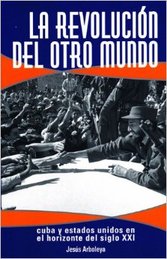

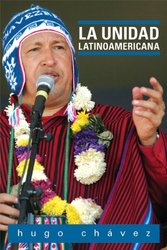


 RSS Feed
RSS Feed
